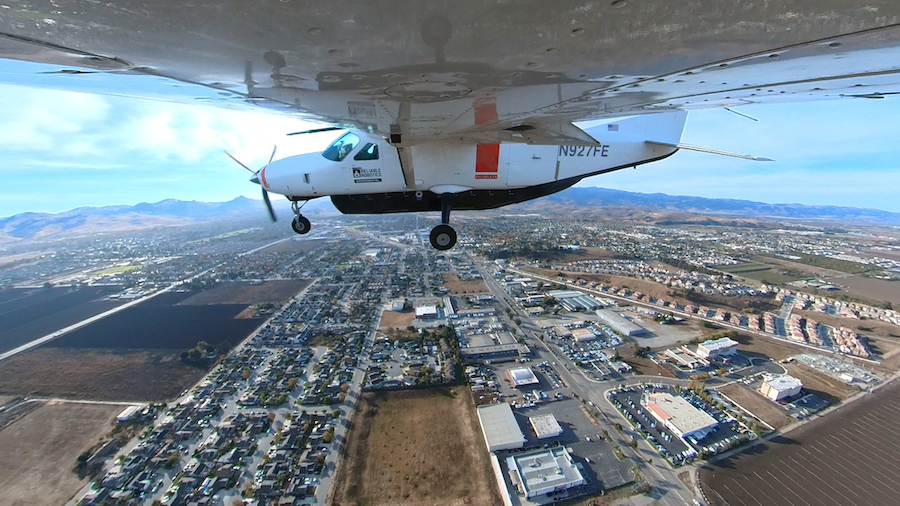
Reliable Robotics is aiming to certify its continuous autopilot system as a retrofit for the Cessna Caravan.
U.S. startup Reliable Robotics has completed a fully autonomous flight with a modified Cessna Caravan with no pilot on board, marking a major milestone on the path to certifying its continuous autopilot and navigation system.
The flight of the modified Caravan took off from Hollister Municipal Airport in California on the morning of Nov. 21. Retrofitted with Reliable’s continuous autopilot system, the aircraft taxied, took off, flew in a pattern and landed autonomously, in a flight that lasted approximately 12 min. including taxiing, according to the company.
The flight was supervised by remote pilot Danah Tommalieh operating 50 mi. away at Reliable’s Mountain View, California, headquarters, while supported by a team of visual observers on the ground. Also present were four FAA aviation safety inspectors, according to the company.
Speaking to the AAM Report following the flight, Reliable Robotics founder and CEO Robert Rose described it as a major milestone for the company’s development and certification efforts, marking the first time it flew the modified Caravan with no pilot onboard, in the presence of FAA observers and with more certifiable-representative avionics and hardware on board.
“We’ve been working toward this milestone for a really long time. We previously flew the Cessna Skyhawk 172 with nobody onboard four years ago, and for this aircraft, we wanted to challenge ourselves by using the hardware we’re intending to push through the certification process,” Rose says. “So, this wasn’t some one-off prototype. It’s actually building toward the final product.
“It’s important for us to push the hardware into a real operational use case, and also build up our flight-test operations experience, because we’re going to need to be doing this over the next 12-18 months to run that system through all of the flight testing necessary for certification,” he adds.
Additionally, the remote flight provided valuable data that will inform the company’s proposals to the FAA about how to craft operating rules for remotely piloted aircraft.
“This moves it from an on-paper academic theorization about how remote piloting might work to a real-world, operational use case,” Rose says.
The company also highlighted the involvement of FAA personnel in the lead-up to the test flight—and during the flight itself—as a testament to the agency’s growing enthusiasm about its certification program, and for integrating large UAS more broadly.
“Around a half-dozen aviation safety inspectors were involved in the process leading up to this, and then a number of them came out to view the operation. The excitement was palpable; you could feel how significant it was for them,” Rose says. “This makes it much more real for the FAA, because it’s not some crazy-future, 2040 goal. It’s something that’s happening right now.”
The certification plan for Reliable’s continuous autopilot and navigation system was accepted formally by the FAA in June. The document leverages existing regulations from normal and transport category aircraft, and does not require any special conditions or exemptions, according to the company.
The autoflight system is being certified initially as a retrofit for the Cessna Caravan, although it is being designed to be aircraft-agnostic. Reliable says it plans to certify the system onto other platforms eventually, including larger multi-engine aircraft.
Rose compares the significance of launching large-scale commercial UAS operations to the fast-growing commercial space industry. In both cases, private enterprises can deliver advanced capabilities–which until recently were exclusively the domain of governments and militaries–at a fraction of the cost.
“This technology is going to be totally transformational,” Rose says. “We’re going to have orders of magnitude more things in the sky, because the technology is now being commoditized . . . We see it as a new era of advanced autonomy in aviation.”





